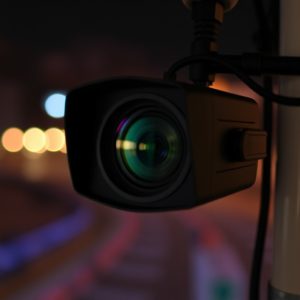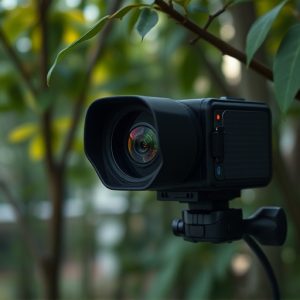Unveiling Spy Equipment: Mobile Apps for Hidden Nanny Cam Detection
Spy equipment, especially hidden nanny cams, has advanced in quality but can be detected using mobil…….
Spy equipment, especially hidden nanny cams, has advanced in quality but can be detected using mobile apps that analyze video and audio signals through Hidden Nanny Cam Video Quality Comparisons. Apps employing AI and machine learning identify cameras by examining video feeds for resolution, frame rate, color discrepancies, unusual shadows, and distorted corners. Key features include remote triggering with instant alerts, high-definition footage analysis, low-light performance, and motion capture capabilities. However, ethical considerations regarding privacy rights, consent, and data protection are crucial as technology advances.
In today’s digital age, privacy concerns have escalated with the proliferation of sophisticated spy equipment. From hidden nanny cams to covert listening devices, these tools can be difficult to detect. Mobile apps have emerged as a game-changer in this landscape, offering a modern approach to spy equipment detection. This article explores the rise of mobile apps, delves into key features for effective detection, and provides a comprehensive Hidden Nanny Cam Video Quality comparison, along with essential legal and ethical considerations.
- Understanding Spy Equipment and Their Hidden Nature
- The Rise of Mobile Apps in Detection: A Modern Approach
- Key Features for Spy App Success: Uncovering the Techniques
- A Comprehensive Comparison: Hidden Nanny Cam Video Quality
- Legal and Ethical Considerations: Navigating Privacy Waters
Understanding Spy Equipment and Their Hidden Nature
Spy equipment, also known as surveillance devices, have evolved significantly over time, becoming increasingly sophisticated and hard to detect. These tools range from simple hidden cameras to advanced listening devices, all designed to capture personal information discreetly. One of the most common forms is the hidden nanny cam, often disguised as everyday objects like clocks or smoke detectors. These cameras can record high-definition video, providing detailed footage for their operators. However, advancements in technology have led to a Hidden Nanny Cam Video Quality Comparison, where modern apps and devices are capable of detecting such equipment by analyzing video feeds and audio signals.
The hidden nature of spy equipment makes it a significant concern for privacy advocates. As these devices can be easily concealed, individuals might not realize they are being monitored until it’s too late. This has led to the development of mobile apps that claim to detect spy cameras and microphones, using various techniques such as infrared or sound wave analysis. While their effectiveness varies, these apps offer a sense of security by helping users identify potential threats in their surroundings, ensuring peace of mind in an era where privacy is increasingly at risk.
The Rise of Mobile Apps in Detection: A Modern Approach
In today’s digital era, mobile apps have emerged as a powerful tool in the realm of spy equipment detection. The rise of high-tech gadgets and hidden cameras has led to an equally advanced solution—mobile applications designed specifically for identifying and mitigating such devices. These apps leverage cutting-edge technology, including advanced sensors and image recognition algorithms, to analyze real-time data from various sources. For instance, a Hidden Nanny Cam Video Quality Comparison app can scrutinize video feeds for telltale signs of manipulation or hidden components, alerting users to potential security breaches.
By integrating AI and machine learning capabilities, these mobile tools have revolutionized the way we navigate and protect our personal spaces. They offer a convenient, accessible solution that empowers individuals to safeguard their privacy. Whether it’s a concerned parent checking on their child’s safety or a business owner monitoring their premises, these apps provide an extra layer of security, ensuring that hidden cameras and spy equipment remain undetected—a testament to the modern approach of leveraging mobile technology for proactive protection.
Key Features for Spy App Success: Uncovering the Techniques
The success of a spy app, designed to detect hidden cameras and other surveillance equipment, relies on several key features that enable it to effectively uncover clandestine monitoring devices. One of the most crucial aspects is video quality analysis. Advanced algorithms capable of examining video feeds in real-time are essential to identify even subtle differences between genuine footage and manipulated or hidden camera outputs. This involves intricate pattern recognition techniques to detect resolution, frame rate, and color discrepancies that might indicate a hidden camera’s presence.
Additionally, the app should incorporate AI-driven image processing. Artificial intelligence can enhance detection capabilities by learning and recognizing common patterns associated with hidden cameras, such as unusual shadows, distorted corners, or suspicious reflections. By comparing captured images against a vast database of known camera signatures, these apps can provide users with accurate insights into potential surveillance threats. Moreover, features like remote triggering and instant alerts empower users to respond swiftly when a hidden camera is detected, ensuring the app’s effectiveness in diverse scenarios.
A Comprehensive Comparison: Hidden Nanny Cam Video Quality
In the realm of spy equipment detection, one critical aspect to consider is the hidden nanny cam video quality. When comparing various mobile apps designed for this purpose, it’s essential to scrutinize the resolution and overall clarity of the footage they capture. A Comprehensive Comparison of Hidden Nanny Cam Video Quality involves assessing the difference between standard definition (SD) and high-definition (HD) videos. Apps that offer HD capabilities provide more detailed images, making it easier to identify potential spy equipment.
The quality comparison further extends to frame rate, which influences the smoothness of the video. Higher frame rates ensure better motion capture, especially in dynamic scenarios. Additionally, low-light performance is a key factor; advanced apps employ enhanced sensors and processing algorithms to deliver clearer images even in dimly lit environments. This feature is vital for identifying covert camera feeds that might operate under minimal light conditions.
Legal and Ethical Considerations: Navigating Privacy Waters
In the realm of mobile app-based spy equipment detection, legal and ethical considerations are as intricate as the technology itself. With applications capable of identifying hidden cameras and tracking devices, users must be mindful of privacy rights. The use of such apps raises questions about surveillance ethics, consent, and data protection. For instance, a Hidden Nanny Cam Video Quality Comparison might highlight the technical capabilities of apps but also serve as a reminder that accessing and sharing footage without proper authorization can have serious legal repercussions.
As technology advances, so does our ability to peek into hidden corners, but this power comes with responsibilities. Developers and users alike must navigate privacy waters carefully, ensuring that the use of spy equipment detection apps respects individual privacy and adheres to data protection laws. Striking a balance between safety and privacy is paramount to fostering a secure digital environment without infringing on personal liberties.
The detection of spy equipment, particularly hidden nanny cams, has evolved significantly with the advent of mobile apps. These modern tools offer a convenient and accessible way to identify potential threats to privacy. By analyzing key features like video quality through a comprehensive comparison—such as the Hidden Nanny Cam Video Quality Assessment—users can make informed decisions. However, it’s crucial to balance innovation with legal and ethical considerations to ensure that the use of such apps respects individual privacy rights while fostering a safer digital environment.


